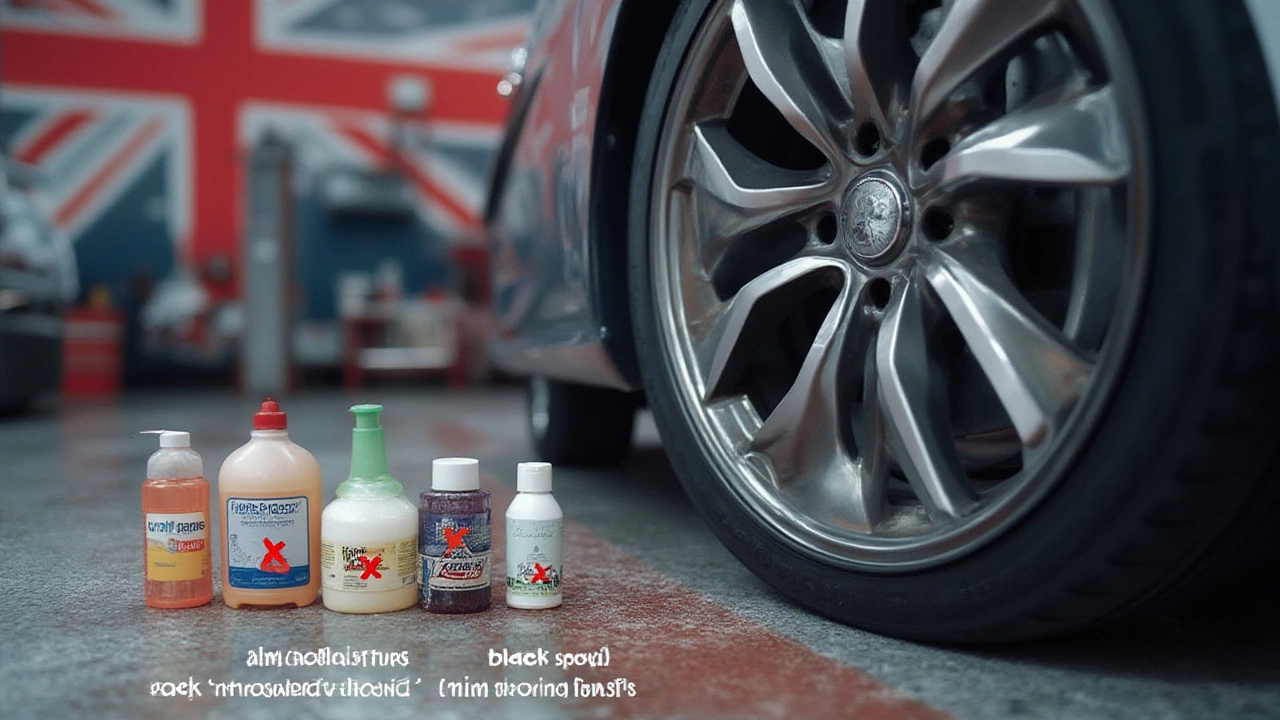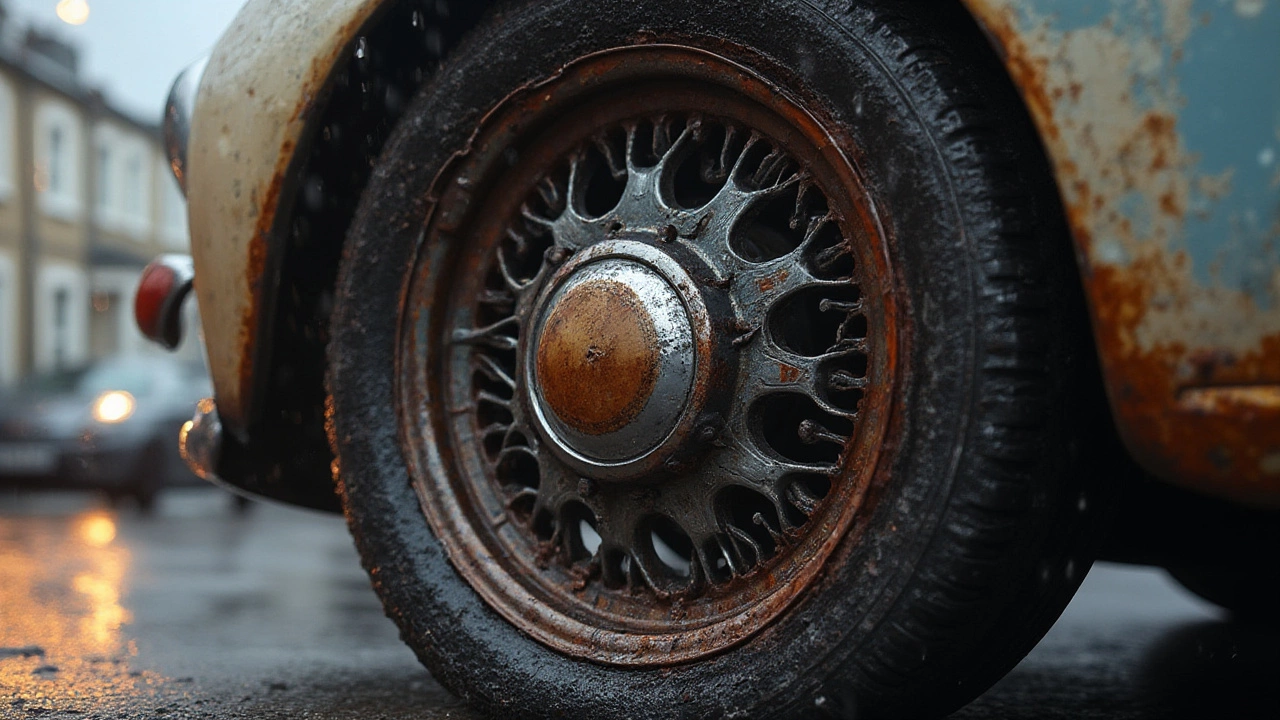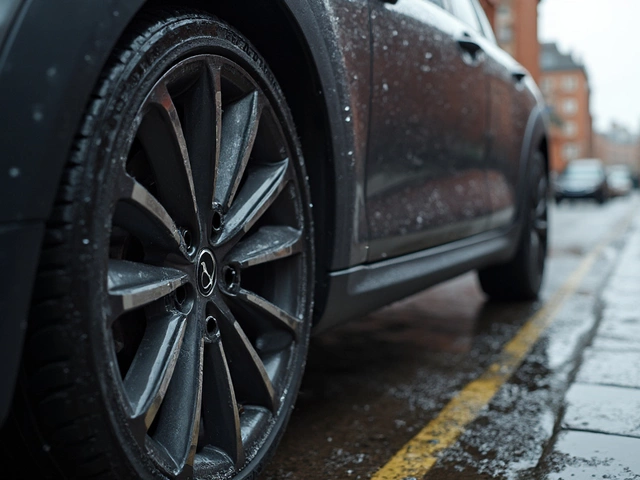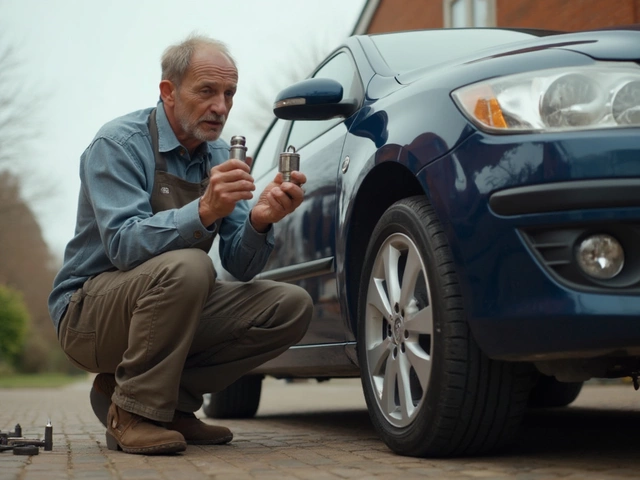Seen a new set of shiny alloy wheels ruined in one careless cleaning session? That harsh lesson stings, especially when you realize it could have been avoided just by knowing what not to use. Your alloy wheels don’t just need attention; they need the right kind of respect. Stop a minute before grabbing whatever bottle or brush you find at the car wash aisle. The wrong choice does more than take the shine off. It can cause lasting scratches, ugly stains, or even permanent damage. That’s money down the drain, not to mention the hassle. Let’s lay out the biggest no-no’s that trip up even the proudest car owners.
Products and Tools That Can Destroy Alloy Wheels
There’s a surprising list of things sitting right in people’s garages that have wrecked thousands of alloy wheels. First up: Acid-based cleaners. Sure, acids sound effective—they melt brake dust fast. But that power is double-edged. Hydrofluoric and sulfuric acid cleaners will dig past dirt and start eating right into the wheel’s protective finish. You’re left with streaks, etching, or dull spots that never polish out. Some even notice bubbling or peeling later. Once acid hits the clear coat or paint, the damage is done and no home remedy will reverse it.
Wire brushes also rank up there with the worst culprits. They look tough and ready for the job, but those bristles are metal-on-metal bad news. Rubbing a wire brush—no matter how light you think you’re pressing—leaves behind thousands of tiny scratches. These micro-scratches might not be obvious at first, but give them a week’s worth of city driving. Brake dust embeds in the grooves and oxidation gets a chance to start. Before you know it, your wheel looks older than the rest of your car.
Maybe you’re tempted by a melamine sponge, like those white "magic erasers" that seem to clean anything. On alloy wheels, they behave like ultra-fine sandpaper, scraping the finish with every swipe. It’s not instant destruction, but over a few cleaning sessions, that smooth shine gets a cloudy haze you can’t buff away.
Harsh degreasers and oven cleaners also need a spot on the blacklist. The idea of blasting away caked-on gunk with strong chemicals is appealing, but those kitchen cleaners often have lye or bleach. Chemical residues soak into porous aluminum alloys and can stain, pit, or weaken the wheel over time. Even the residue left behind can cause corrosion or gum up next time you try to apply a protective wax.
You also should skip abrasive polishes unless they’re clearly marked for alloy wheels. Some metal polishes have grit meant for old-school chrome bumpers or steel tools—utterly wrong for the thin lacquer or powder-coat on alloys. Put those on your wheels and you’ll burn through the coating in no time, exposing bare metal to rot.
Let’s not forget simple but damaging tools like screwdrivers, paint scrapers, or steel wool. People grab these to knock off hard tar or baked-on debris. It works, but now you’ve got gouges and nicks that only a full respray (or expensive replacement) can fix. Even older microfiber towels can betray you. Once they’re gritty or full of dust, they become scratch pads when you rub them across a delicate finish. You see the trend, right? If it’s strong, rough, or edgy, keep it off your wheels.
One oddball culprit? Household glass cleaners with ammonia. These seem fine, but they strip waxes and protective coatings in a few uses. That leaves your wheels at the mercy of weather, salt, and road grime. Specialized wheel cleaners exist for a reason—they’re balanced for the metals and coatings used in modern alloys. The bottom line: If you’re not sure it’s made for wheels, it probably isn’t. And the risk isn’t worth it.

Surprising Habits That Can Ruin Wheel Finishes
The sneaky part about wheel care is how everyday habits can be just as damaging as using the wrong products. Think about washing wheels while they’re still hot from driving. That sizzling surface reacts badly with cold water, causing rapid expansion and contraction. On delicate finishes, you get hairline cracks or visible warping. It also makes some cleaners more likely to stain since they dry before you’ve even scrubbed them off.
Maybe you leave those tough stains for “next time.” But letting brake dust or salt sit isn’t just making extra work for your next wash—it leads to corrosion. Alloy wheels are lightweight because they’re porous, which makes them vulnerable to intrusion from road chemicals and water. Over weeks, moisture creeps in under debris, causing that telltale filmy white oxidation. By the time you try to wash it away, the wheel’s finish is pitted and dull.
Pressure washing is a favorite among shortcut enthusiasts, but blasting wheels at full strength isn’t a smart move. It often forces grime into crevices you’ll never reach, and at worst, strips off delicate coatings. There are news stories of folks literally blasting paint off their alloys with powerful pressure washers. Most sheds have a weak setting for a reason—keep the power for muddy wheel wells, not your rim faces.
Ever forgotten to rinse off winter de-icer or road salt from your wheels? That’s a recipe for disaster if you drive in places where road crews dump those chemicals every storm. Sodium chloride, magnesium chloride, calcium chloride—they’re all bad news for unprotected alloys. Moisture activates these salts, and once they eat through the wheel’s finish, you get corrosion from the inside out.
Skipping an after-wash dry—just letting wheels air dry after a good scrub—seems harmless. But minerals in tap water can leave spots, and worse, those droplets are magnets for dust and pollution while you’re driving. Over time, those spots set in and become stubborn stains.
Using tires shines carelessly is another common mistake. Many tire shines are oily, and if you let them run onto your wheels, they leave behind residue that picks up dirt fast. Some formulas even stain light-colored finishes. If you want your wheels to look sharp, keep tire products on the tire only.
Parking choices play a role too. Gravel driveways or muddy shoulders may be convenient, but those little rocks and organic bits stick to your tires and wind up scratching or embedding in the soft lacquers used on many alloy rims. Even automatic car washes can be risky if they use bristled rollers. Those big brushes are rarely cleaned, and all that road grit from hundreds of cars becomes sandpaper across your rims.
Think about how often you see scuffed rims from poorly judged parallel parking or low kerbs. It’s easy to blame potholes, but a simple slip while parking causes those same ugly lines. Many alloy wheels are only painted or powder-coated, not chrome-plated, so even a slight scratch exposes sensitive underlayers. Once air, water, or soil gets in, you’re on your way to a slow, ugly breakdown.
Weather’s another silent attacker. Leaving your car outside for days, especially when it rains and then bakes in the sun, can speed up clear-coat failure. UV light breaks down polymers, and soaked wheels don’t get a chance to fully dry in between. Pretty soon, areas start to discolor or peel, particularly on older or cheaper alloys. Some experts say that wheels left outside in harsh climates need extra protection, like wheel wax or sealants, to avoid premature aging.
So, it’s not just about what goes on your wheels, but how you care for them. Tiny daily decisions can make the difference between perfect alloys and a set that needs a full refinish. Pay close attention to habits that seem harmless but add up to real, visible wear.

Tips for Safe Cleaning and Lasting Protection
Let’s get to the good stuff: how do you actually clean and care for your alloy wheels without risking all those pitfalls? It’s not complicated, but it does take a little more thought than grabbing any old bottle from the shelf. First, always reach for products specifically labeled for alloy wheels. Trusted brands spend years developing formulas with balanced pH levels, meaning they clean off brake dust and road grime without attacking your wheel’s finish. Look for cleaners labeled “acid-free” or “pH neutral.”
A soft-bristle wheel brush is your friend. What you want is a brush made with synthetic fibers—think of the softness of a makeup brush, but made tough enough for the road. This gets into the nooks and crannies around lug nuts and spokes without scratching anything. Wheel cleaning mitts, made from microfiber, are also great, especially for wiping the face and outer lip of the rim.
Work on wheels that are cool to the touch. If you’ve just come back from a drive, give it an hour before spraying any water or cleaner. This stops chemical reactions and lets your products work on the grime, not the finish. Always rinse first. A strong flow of water (not a jet) knocks loose dirt and sand before you touch the wheel, avoiding swirl marks early on.
Follow a pattern: apply the cleaner generously, let it sit as directed (usually 2–5 minutes), then use your soft brush or mitt. Rinse with plenty of water before the cleaner dries out. If you spot remaining stains, repeat gently, but don’t scrub too hard or use extra-harsh chemicals. Persistent deposits like tar should only be treated with tar remover made for wheels—and tested in a small area first.
When drying, grab a clean, high-quality microfiber towel. These trap water and prevent streaks or water spots. Don’t cut corners by air drying if you want to avoid mineral stains. Afterward, it’s smart to apply a layer of wheel wax or sealant. This creates a barrier between metal and the environment, making future cleaning easier and safer. There are great options made for alloys; a quick monthly application keeps most daily grime at bay.
Avoid those universal polishes and compounds. If you want to restore some shine, pick a polish formulated for aluminum wheels (unfinished) or one marked “safe for coated finishes” if yours are painted or clear-coated. Ask your local car accessory shop if you aren’t sure. It’s not worth the risk just to save a couple of bucks.
Here’s a smart tip: if you live in an area where winters are rough or roads are heavily salted, consider switching to a cheaper set of wheels (steel or older alloys) just for the rough months. That way, you keep your good alloys protected, and any salt or chemical damage happens to the “winter beaters.” It’s a trick even pro detailers use.
Inspect your wheels regularly. Check for chips, nicks, or bubbling in the finish after every deep clean. Catching early signs of damage means you can use a touch-up kit or even a clear-coat spray to protect the spot before it gets worse.
Remember not to let water sit for hours, especially if you’re parking outside. Moisture plus heat speeds up corrosion, especially around lug nuts and center caps where water likes to pool.
If you’re heading to an automatic car wash, look for a brushless or touchless system. These rely on chemicals (so double-check for pH balance) and jets of water, not rotating bristles. It’s not as thorough as handwashing, but way safer for fragile alloy finishes.
For daily dusting, a gentle, dry microfiber cloth does the trick—just make sure it’s free of sand or hard debris. And always store your cleaning supplies clean so you’re not rubbing hidden grit into your shiny surfaces next time.
It comes down to a simple rule—use the gentlest method that gets the job done, and never assume the toughest product will give the best results. Quick cleanings, right tools, the right cleaners, and a coating of protection will keep your alloy wheels looking sharp long after your neighbors’ have turned dull.




